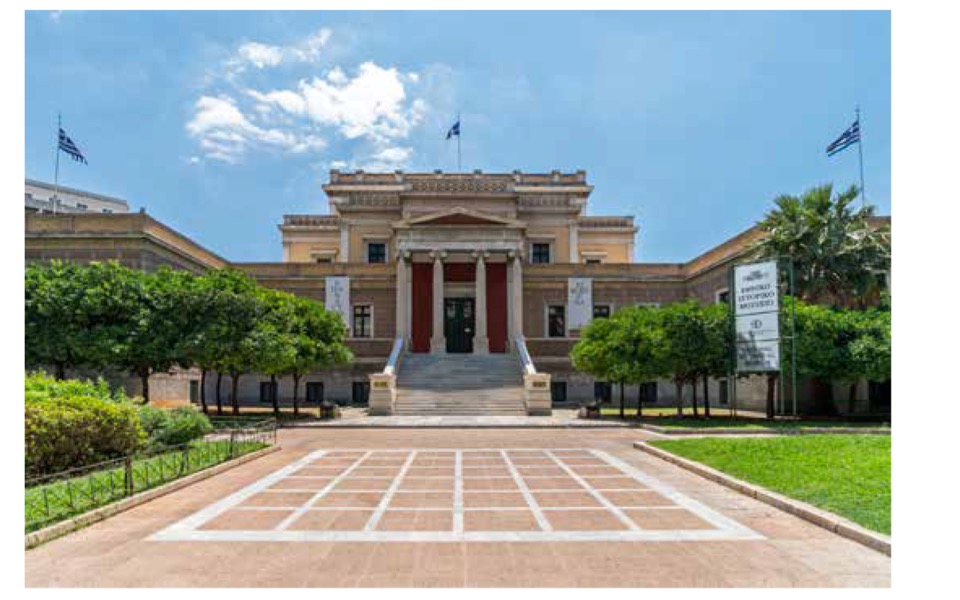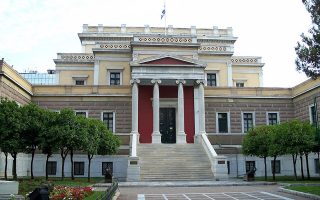Faces of Athens over 200 years
A new publication by architect Manolis Anastasakis is a monumental and insightful visual record of the Greek capital’s evolution from independence to today

The bicentennial of the start of the Greek War of Independence has yielded a rich harvest of books in English that shed new light on this seminal event in Greek and European history. New works by prominent historians, political scientists and artists commemorate the anniversary and form a new starting point for further investigation and analysis of a revolution that is still ongoing.
A significant addition to this flowering of scholarship is Manolis Anastasakis’ “Athens: Two Hundred Years, Two Hundred Buildings,” a monumental and insightful visual record of the Greek capital’s evolution from the first years of independence to today.
Anastasakis, an architect, university professor and editor of architectural publications, has selected 200 buildings and written a short description of each one, with references to a rich bibliography at the end of the book. “The basic criterion that guided our selection is the unique architectural value of the building’s facade, as well as its lingering presence in the city today,” he notes in the introduction.
The selection was determined also by the need to present buildings from the six main periods that the book describes, and to represent the work of great architects who left their mark on the city. “Every building included in this edition has proven its merit and has stood the test of time,” Anastasakis notes, adding that the selection of buildings from the past 40 years is, unavoidably, more subjective.
Each building is represented by one high-quality color photograph, listed according to the year in which it was built, and (when applicable) when it underwent major changes. The building’s name and current use, its architect (or architects) and its address complement a brief but comprehensive description of the building, its construction and its history up to today. The aim, as Anastasakis writes, is to “create a succinct but hopefully coherent and well-composed architectural portrait of modern Athens.”
The book is organized according to chronological periods: the pre-revolution period; from 1821 through 1830, when Greece became independent and the reconstruction of Athens began, to 1867 and the end of its first king’s reign; from 1868 to 1922, when a flood of refugees from Asia Minor transformed the city; 1923-45; 1946-79; and 1980-2021.
The various periods, the influences of foreign schools and the architects of the time are discussed in informative and penetrative essays by architects and historians of art and architecture – Manos Biris, Francois Loyer, Marilena Z. Cassimatis, Helen Fessas-Emmanouil, Maria Daniil, Kostas Tsiambaos, Stylianos Giamarelos and Yannis A. Aesopos. The historical photographs and references that accompany these texts are an invaluable resource for anyone interested in the development of the city and its modern face.
The buildings depicted in the book range from the only preserved Ottoman bath house (hammam) on Kyrristou Street in Plaka, dating from the 15th and 16th centuries, to residential and company buildings completed in the past decade. Among the latter are the monumental Stavros Niarchos Foundation Cultural Center (Renzo Piano Building Workshop) and the Agemar Headquarters (Rena Sakellaridou – RS SPARCH), both of which are in Kallithea. These buildings, along with the Onassis Stegi (architecturestudio) and the new Acropolis Museum (Bernard Tschumi with Michalis Fotiadis) are among the latest additions that will remain significant parts of the city’s heritage well into the future.
The essays and individual buildings present, in the most tangible way, the spurts of growth and creativity of the nation, the ambitions and compromises of its visionaries and leaders, the largesse of its benefactors and the ravages of time. Iconic buildings that survived invasions, civil war, bankruptcies and mindless development bear living witness to their creators’ powers and to the nation’s triumphs and tribulations.
Aside from their beauty – or, sometimes, their eccentricity – they do not reveal all their secrets to those who gaze upon them. Their stories may be hidden behind the damage wrought by later owners’ ambitions or negligence, their significance lost in the mass of nondescript buildings that have smothered the Attic plain over the past century.
This book, with its selection of 200 buildings, is both authoritative and entertaining. It tells the story of Athens through the life and work of kings, great architects and town planners, through historical events and personal ambitions. It complements the research of historians, political scientists, sociologists and anthropologists, giving body to their narratives, analyses and theories.
The Athenian Trilogy – the great complex of neoclassical buildings housing Athens University, the Academy and the National Library – tells of the young kingdom’s aspirations to revive the glories of Ancient Athens and to establish the nation on Enlightenment principles, even as its political elite was shaping the template for perennial division. Here we see the works and read the stories of the Danish brothers Christian and Theophil Hansen, the German Ernst Ziller, their French rivals Gerard, Boulanger and Troump, as well as the first Greek architects, all of whom put their stamp on the new capital.
The successes, missteps and lost opportunities of the modern Greek state can be read both in the capital’s grand buildings and in the drab apartment blocks built for refugees from the Asia Minor catastrophe in 1922. The nation’s history is evident in the grand public buildings, often funded by benefactors and public donations, as well as in the sea of apartment blocks. The latter are products of the “automatic” development prompted by a law whereby owners of land can give it to developers in exchange for part of the ensuing apartment block. These are not the buildings described in “Athens: Two Hundred Years, Two Hundred Buildings.” They are the rule that makes the exceptions even more precious.
In his selection and his lucid narrative, Anastasakis explains the buildings that we all know and highlights others lost in the maze of time and periodic frenzies of construction. He has produced a valuable reference book that illustrates the gains and losses of the past and sets the scene for the creative and ambitious architects who today are shaping the city’s new, new face.





